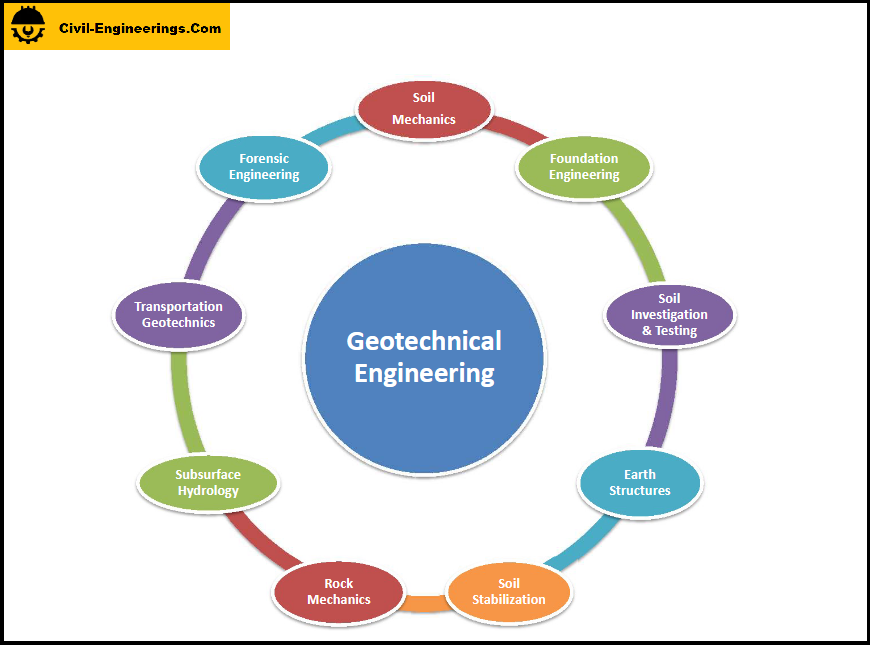10 Simple Techniques For Specialized Geotechnical Engineering Solutions
Fascination About Specialized Geotechnical Engineering Solutions
Table of ContentsThe Buzz on Specialized Geotechnical Engineering SolutionsThe Best Guide To Specialized Geotechnical Engineering SolutionsSome Known Incorrect Statements About Specialized Geotechnical Engineering Solutions Everything about Specialized Geotechnical Engineering SolutionsThe Ultimate Guide To Specialized Geotechnical Engineering SolutionsSpecialized Geotechnical Engineering Solutions - The Facts
William Rankine, a designer and physicist, created a different to Coulomb's earth pressure theory. Albert Atterberg developed the clay consistency indices that are still made use of today for dirt category. In 1885, Osborne Reynolds acknowledged that shearing causes volumetric expansion of dense materials and contraction of loose granular materials. Modern geotechnical engineering is claimed to have started in 1925 with the publication of Erdbaumechanik by Karl von Terzaghi, a mechanical engineer and rock hound. Terzaghi also developed the framework for theories of birthing capability of foundations, and the theory for forecast of the price of negotiation of clay layers due to loan consolidation. Afterwards, Maurice Biot completely developed the three-dimensional soil debt consolidation concept, extending the one-dimensional model formerly developed by Terzaghi to more general hypotheses and presenting the set of standard equations of Poroelasticity.
Geotechnical designers investigate and establish the residential or commercial properties of subsurface conditions and products.
The Ultimate Guide To Specialized Geotechnical Engineering Solutions
Geologic mapping and analysis of geomorphology are generally finished in examination with a geologist or design rock hound. Subsurface exploration typically entails in-situ screening (for instance, the common penetration test and cone penetration examination). The excavating of examination pits and trenching (specifically for situating faults and slide airplanes) might likewise be used to learn more about dirt conditions at depth. , which uses a thick-walled split spoon sampler, is the most usual means to gather disrupted examples.

If the user interface in between the mass and the base of a slope has a complicated geometry, incline security analysis is challenging and numerical option methods are called for. Generally, the interface's exact geometry is unknown, and a streamlined user interface geometry is assumed. Finite slopes call for three-dimensional models to be analyzed, so most slopes are examined presuming that they are infinitely large and can be represented by two-dimensional designs.
The Main Principles Of Specialized Geotechnical Engineering Solutions

Measurement of amounts and examination of actual problems. It is improper for projects whose design can not be changed throughout building.
Concepts of Geotechnical Engineering. Soil Mechanics and Foundations. Interrupted soil residential properties and geotechnical style, Schofield, Andrew N., Thomas Telford, 2006.
Some Known Details About Specialized Geotechnical Engineering Solutions
Principles and Technique of Ground Improvement. Ground Enhancement Concepts And Applications In Asia. Style evaluation in rock technicians.
Cengage Understanding, Stamford, 666 p. Atkinson, J., 2007. The mechanics why not find out more of dirts and foundations. The Observational Method in ground design concepts and applications.
More About Specialized Geotechnical Engineering Solutions
These records are tailored to fulfill the specific demands of a project and include design criteria and guidance for the building and construction of a variety of manufactured structures. As offering working as a consultant solutions covering areas such as slope stability and load-bearing capacities for different materials, these designers carry out research and growth activities to improve approaches, devices, materials understanding and analysis covering entire lifecycles.
Engineering the residential properties and technicians of rocks consisting of the application of characteristics, fluid auto mechanics, kinematics and material mechanics. This unites geology, dirt and rock technicians, and structural engineering for the layout and building and construction of foundations for a variety of civil engineering jobs. This field entails anticipating the efficiency of foundation soil and rock to a load imposed by a structure, while thinking about performance, economic climate and safety and security.
Rates of pay normally increase as your expertise and abilities expand, with guidelines pointing to a graduate beginning salary of in between 18,000 and 28,000 per year in the UK. This rises to 26,000 to 36,000 with a couple of years of experience and then getting to 40,000 to 60,000+ for senior, legal or master engineers.
A Biased View of Specialized Geotechnical Engineering Solutions
With the ideal application it is her comment is here feasible to grasp the profession and gain access to a challenging special info yet satisfying and vital career. A geologist would require to retrain to come to be a geotechnical designer, although there is lots of cross-over in between both occupations, which might make this much easier. Rock hounds need to have an understanding of soils, rocks and other materials from a scientific perspective, while geotechnical engineers story their knowledge of issues such as dirt and rock auto mechanic, geophysics and hydrology and use them to engineering and ecological tasks.
When beginning out, these engineers will certainly tend to service less complex projects, developing up understanding and experience ready for more challenging work later. Geotechnical designers often tend to specialise in certain areas as they expand in experience, focusing on certain facilities such as railways, roads or water. These designers additionally deal with renewable resource, offshore and onshore oil and gas, nuclear power, and a lot more.